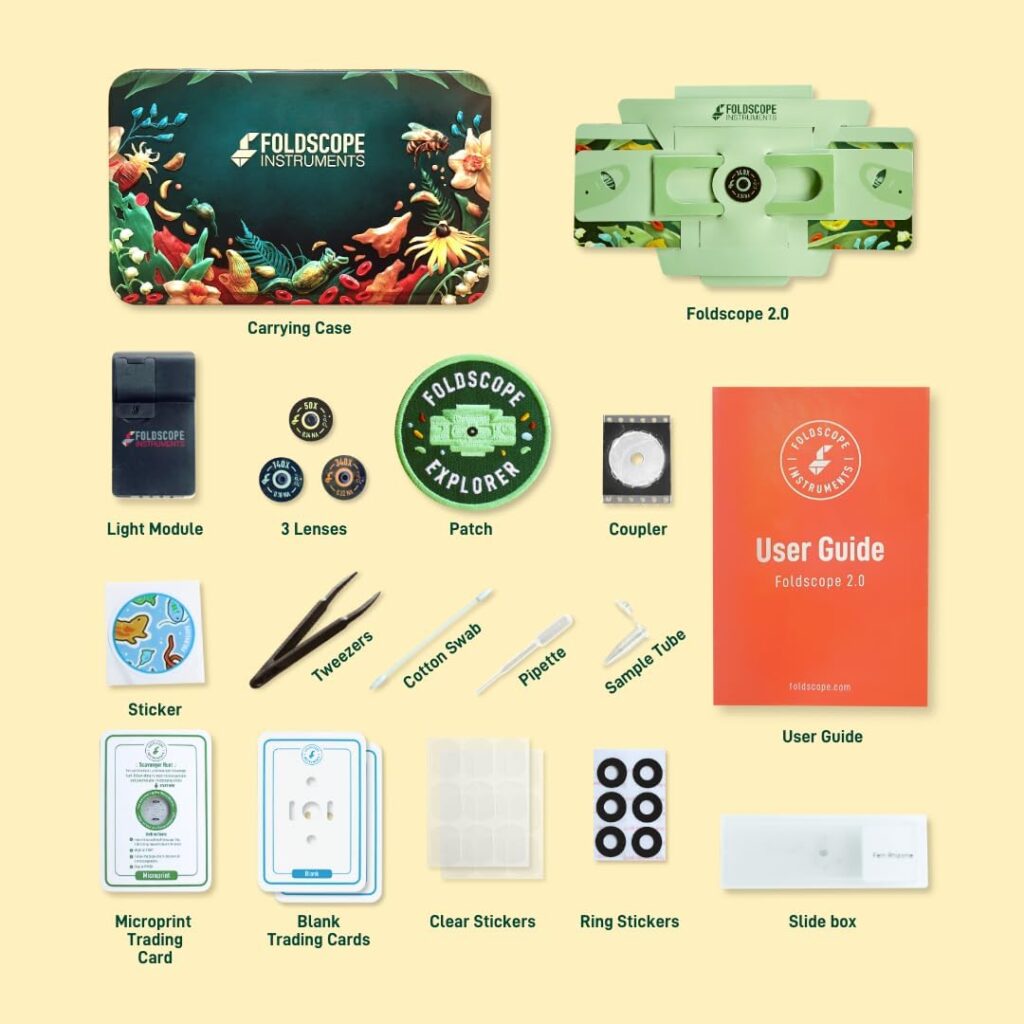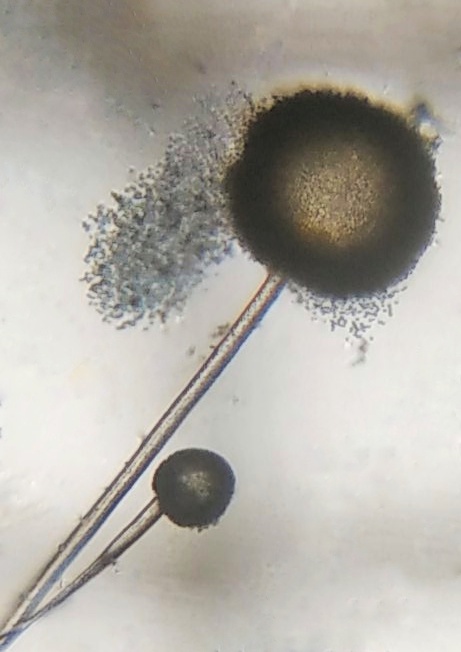Key Takeaways
- The Foldscope demonstrates how origami principles can transform simple materials into powerful scientific tools.
- Its affordability and accessibility are democratizing science and sparking global curiosity.
- A vibrant Foldscope community fosters collaboration and innovation across borders.
- The Foldscope’s frugal yet impactful design serves as an example of how innovation can lead to widespread solutions.
Imagine holding the entire microscopic world in the palm of your hand, all thanks to a few clever folds. This isn’t a fantasy from a sci-fi novel—it’s the reality of the Foldscope, an ingenious creation that marries the ancient art of origami with cutting-edge optical technology.
Born in the labs of Stanford University, the Foldscope is more than just a microscope. It’s a testament to the transformative power of applied origami and folding technology. This pocket-sized marvel costs less than a dollar to produce, yet it opens up a universe of scientific exploration to curious minds across the globe.
Table of Contents

The Genesis: From Paper to Paradigm Shift
A Problem Folded into an Opportunity
The tale of the Foldscope begins with a classic problem-solving scenario. Manu Prakash, an assistant professor of bioengineering at Stanford, and his PhD student Jim Cybulski, kept encountering a frustrating issue during their field research: the lack of reliable, portable microscopes.
Traditional microscopes, while powerful, come with a hefty price tag and a fragile nature. In remote areas, these expensive instruments often sat unused, victims of rough handling or harsh environments. Prakash and Cybulski saw an opportunity hiding in plain sight—or rather, in a plain sheet of paper.
The Origami Revolution
Inspired by the precision and versatility of origami, the duo posed a deceptively simple question: “What’s the best microscope you can build for under $1?” This query set them on a path that would reshape our approach to scientific tools.
Their Eureka! moment came when they realized that paper—humble, ubiquitous paper—could be the key. By harnessing the principles of origami, they could create a microscope that was:
- Incredibly affordable
- Surprisingly durable
- Astonishingly powerful
- Universally accessible
The Foldscope was born, proving that sometimes, the most groundbreaking innovations come from folding old ideas in new ways.
Anatomy of Innovation: Inside the Foldscope
Components: Simplicity Meets Sophistication
At first glance, the Foldscope’s components seem almost too simple to be true:
- A sheet of paper
- A tiny spherical lens
- An LED for illumination
- A button battery
- A few magnetic couplers
Yet, it’s the ingenious arrangement of these humble parts that creates a tool capable of 2,000x magnification. That’s powerful enough to see individual cells, blood parasites, and even some bacteria!
Assembly: A Hands-On Experience
Putting together a Foldscope is like embarking on a miniature origami adventure. Here’s a quick rundown of the process:
- Start with a pre-printed sheet of sturdy paper
- Punch out the pieces
- Follow a series of precise folds (here’s where the origami magic happens!)
- Insert the lens and LED into their designated spots
- Use the magnetic couplers to align everything perfectly
The result? A fully functional microscope that fits in your pocket, assembled in minutes, without a single screw or complex mechanism. It’s a hands-on lesson in the power of thoughtful design and the surprising capabilities of folded structures.
Features That Unfold Possibilities
Despite its simplicity, the Foldscope packs some impressive features:
- High magnification: Up to 2,000x, rivaling some laboratory microscopes
- Durability: Can be dropped, stepped on, or dunked in water without breaking
- Portability: Weighs less than 10 grams and fits in a pocket
- Versatility: Can be adapted for fluorescence microscopy with colored LEDs
- Accessibility: Costs less than $1 to produce
These features make the Foldscope not just a tool, but a gateway to scientific exploration for people around the world. In fact, it was the Foldscope that lead to the discovery of the folding mechanism of the Lacrymaria olor’s neck.

Beyond the Lens: Foldscope’s Impact
Democratizing Science Education
The Foldscope is rewriting the rules of science education. In classrooms from rural India to urban America, students are getting hands-on experience with microscopy, often for the first time. This accessibility is sparking curiosity and fostering a new generation of scientific thinkers.
Consider this scenario: A class of 30 students in a resource-strapped school. Previously, they might have had to share a single microscope, if they had one at all. Now, with Foldscopes, each student can have their own instrument to explore the microscopic world. The impact on engagement and learning is profound.
Empowering Citizen Scientists
The Foldscope isn’t just for classrooms. It’s turning everyday people into citizen scientists. Farmers in developing countries use it to identify crop pests. Nature enthusiasts explore the hidden world of pond water. Amateur mycologists study the intricate structures of fungi.
One particularly heartwarming story comes from Tanzania, where a group of students used Foldscopes to examine cow feces for parasites. This seemingly simple project contributed valuable data to local health initiatives, showcasing how accessible tools can lead to meaningful scientific contributions.
Advancing Field Research
For researchers working in remote or resource-limited areas, the Foldscope is a game-changer. Its portability and durability make it ideal for fieldwork in challenging environments.
Ecologists studying soil biodiversity in the Amazon rainforest have used Foldscopes to examine microorganisms on-site, rather than having to transport samples to a distant lab. This immediate analysis allows for more dynamic and responsive research methodologies.
The Foldscope Community: A Global Microcosmos
Connecting Curious Minds
One of the most exciting aspects of the Foldscope project is the vibrant community it has fostered. Known as the Microcosmos, this online platform connects Foldscope users from around the world. It’s a place where:
- Users share their discoveries and observations
- Educators exchange lesson plans and ideas
- Researchers collaborate on projects
- Enthusiasts find inspiration and support
The Microcosmos embodies the collaborative spirit of science, proving that great discoveries can come from anywhere when people have the right tools and connections.
Stories from the Field
The Microcosmos is full of inspiring stories that showcase the Foldscope’s impact:
- A mother-daughter duo in the U.S. used their Foldscope to study crystal structures, inspired by the movie “Frozen”
- Students in India identified agricultural pests, helping local farmers protect their crops
- A hobbyist in Japan documented the microscopic life in urban puddles, creating a fascinating time-lapse of biodiversity
These stories highlight how the Foldscope is not just a scientific instrument, but a catalyst for curiosity and exploration.
Folding the Future: What’s Next for Foldscope?
Continuous Innovation
The team behind Foldscope isn’t resting on their laurels. They’re constantly refining and expanding their designs. Recent innovations include:
- Foldscope Mini: An even more compact version
- Foldscope 2.0: Enhanced durability and easier assembly
- Specialized adapters for smartphone integration
These developments promise to make the Foldscope even more versatile and user-friendly.
Expanding the Toolkit
Looking ahead, Foldscope Instruments, Inc. is exploring ways to create a broader ecosystem of affordable scientific tools. Imagine a future where students and researchers have access to not just microscopes, but entire labs that can fit in a backpack.
Some potential areas of development include:
- Portable spectrometers
- Foldable centrifuges
- Paper-based diagnostic tools
These innovations could revolutionize fields from environmental monitoring to point-of-care medical diagnostics.
A Vision Unfolding
The ultimate goal of the Foldscope project is ambitious yet inspiring: to make scientific tools as common as pencils. By doing so, they hope to:
- Spark scientific curiosity in people of all ages and backgrounds
- Enable grassroots scientific research and problem-solving
- Bridge the gap between professional scientists and citizen researchers
- Foster a global community united by the joy of discovery
As this vision unfolds, the Foldscope stands as a shining example of how applied origami and folding technology can change the world.
Conclusion: The Origami of Progress
The Foldscope is more than just a clever application of origami principles—it’s a revolution in how we approach scientific tools and education. By transforming a sheet of paper into a powerful microscope, Manu Prakash and Jim Cybulski have shown us that innovation often lies in reimagining the familiar.
As we’ve seen, the impact of this tiny tool is anything but small. From classrooms to rainforests, the Foldscope is opening eyes and minds to the wonders of the microscopic world. It’s empowering a new generation of scientists, fostering global collaboration, and proving that great ideas can unfold from the simplest of materials.
The story of the Foldscope reminds us that sometimes, the most powerful solutions are those we can hold in our hands. It challenges us to look at the world around us with fresh eyes, always asking: what everyday object might be hiding the next big breakthrough?




